
The sperm whale or cachalot (Physeter macrocephalus) is a marine creature distinguished by its large size and impressive diving skills along with its distinctive features that set it apart from other sea animals. This majestic toothed predator has captivated interest for ages due to its massive proportions, enigmatic behavior, in the deep ocean waters and unique physical traits.
Physical Traits
The sperm whale is quite distinct with its block shaped head that makes up almost a third of its body length.The male sperm whales can grow up to 60 feet (18 meters) weighing around 45 tons; whereas the females are usually smaller at 36 feet (11 meters) with a weight of approximately 15 tons. Such differences in size between female sperm whales are not unusual in the animal world and are particularly noticeable in this species.
The sperm whales massive head is a feature that stands out due to housing the largest brain of any creature on Earth weighing approximately 17 pounds (7 1/2 kilograms). This brain is truly a marvel of anatomy and size wise! Additionally, contained within the head is the spermaceti organ. A storage unit filled with spermaceti oil; a waxy substance that has intrigued scientists for decades now! While its exact purpose remains a mystery to researchers until this day; it is commonly believed to play a role in buoyancy regulation and echolocation. Essential skills for hunting amidst the dark depths of the ocean.


Explorers of the oceans depths
The diving skills of sperm whales are truly impressive! These amazing creatures can plunge into the depths of over 7 000 feet ( 2, 250 meters) and stay underwater for about 90 minutes. Although their typical dives usually last between 35 and 45 minutes. Their knack for diving deep is thanks to a number of physical adjustments they have made. One key feature is their ribcage that allows their lungs to compress when facing the intense pressure of the deep ocean depths, which helps prevent injuries. Their physiology is well suited to endure elevated carbon dioxide levels. They have the ability to retain significant oxygen reserves in their muscles which helps them thrive in environments with limited oxygen availability.
Strategies for Nutrition and Hunting
The diet of sperm whales mainly comprises squid such as the giant squids since they are carnivorous creatures.They rely on echolocation to find their prey within the dark ocean depths. By sending out clicks and interpreting the echoes that bounce back to them, sperm whales can mentally navigate their environment and spot their prey from distances spanning up to a mile.
After spotting their target in the ocean depths Sperm whales rely on a mix of swift movements and sly tactics to seize their prey. Despite their stature these whales exhibit remarkable speed and agility. Researchers theorize that these creatures employ suction to pull in their meals, which are promptly dealt with by the sharp teeth in the whale’s jaw.
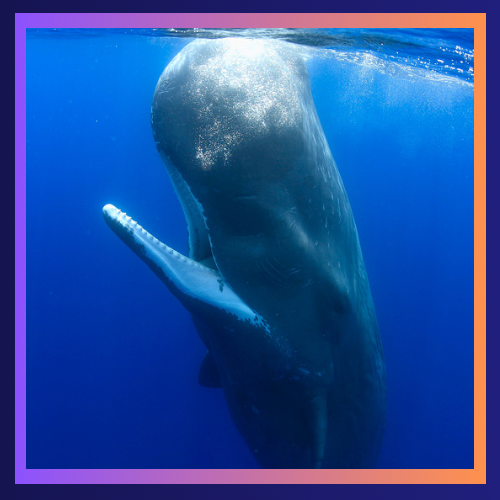
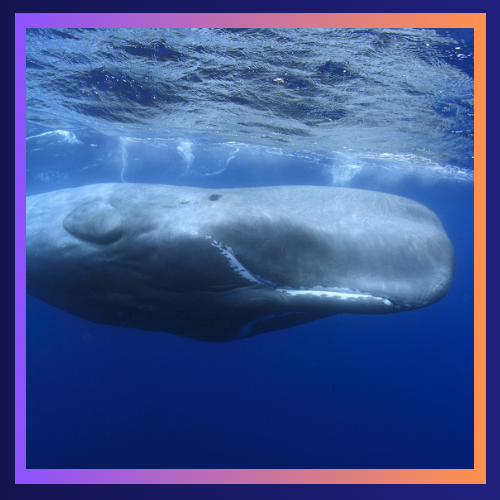
The dynamics of society and interpersonal interaction.
Sperm whales communicate by emitting clicks and codas in patterns that can be arranged differently each time they are repeated; akin to a fingerprint for identification purposes among themselves according to some researchers investigating the phenomenon suggests that these vocalizations may serve additional functions beyond just recognition; potentially sharing details, about their surroundings or even revealing their emotions.
The process of generating offspring and the duration of life.
Female sperm whales become ready for reproduction at nine years old for females and at a later time for males between the ages of 18 and 20 years old. Mating usually happens during the summer season; following for a pregnancy period lasting roughly 14 to 16 months; the female whale gives birth to one baby whale calf. The newborn whale calves measure approximately 13 feet (around 4 meters) in length and weigh around one ton. They are breastfed for a period of up to two years but might begin consuming solid food as early as one year old.
Sperm whales often live for around 60 years due to their slow growth and extended periods between reproducing offspring. Factors that expose them to risks from shifts in the environment and human interventions.
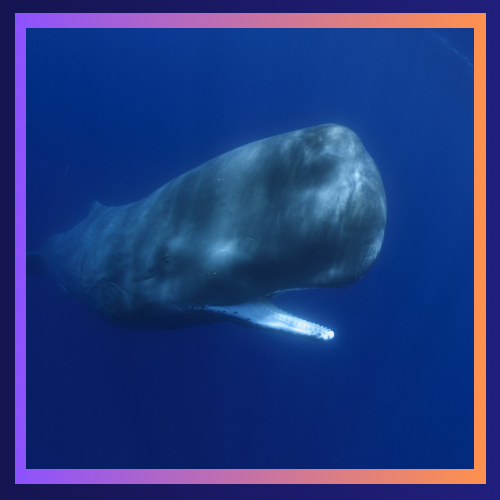
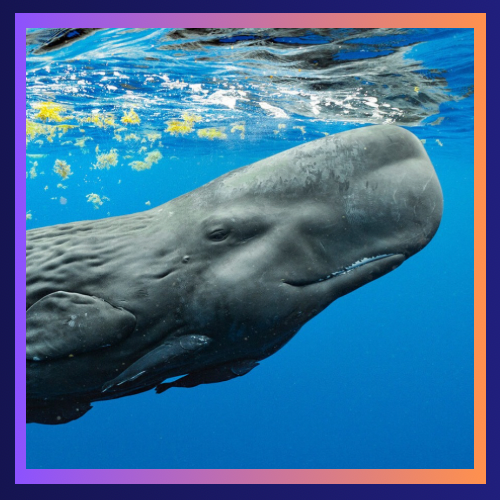
The interaction between people and conservation efforts.
Throughout history sperm whales were extensively targeted for their spermaceti oil, a commodity in lamps as well as in lubricants and cosmetics. The global sperm whale population suffered greatly from whaling activities bringing them close to extinction. While commercial whaling has seen a decline since the 1900s sperm whales continue to encounter various dangers, such as getting caught in fishing equipment colliding with vessels, exposure to pollution and disturbance from human related noises underwater.
Sperm whales are currently safeguarded by a variety of regulations and treaties to ensure their well being and survival in the wild environment they call home. In an effort to minimize risks posed by activities and protect their habitats special attention is given to conservation initiatives. Research efforts are ongoing. Offer valuable knowledge, about these remarkable animals stressing the significance of ensuring their existence for generations to come.
Interesting Tidbits About Sperm Whales
Herman Melville found inspiration for his novel ” Moby Dick” in true tales of sperm whales such as the harrowing saga of the Essex. A whaling vessel that met its fate at the hands of a combative sperm whale in 1820.
The clicks of sperm whales are known for being exceptionally loud at 230 decibels – the highest, among all animal sounds produced for echolocation and communication purposes during their deep sea hunting expeditions. and disturbance from human related noises underwater.
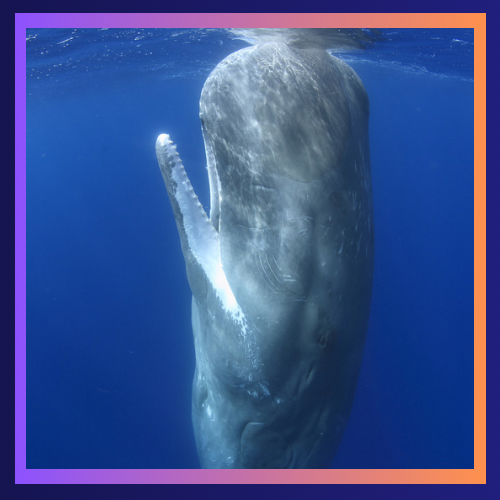

The enigma of Ambergris revolves around the fact that sperm whales create a substance known as ambergris through their digestion process. Ambergris holds value in the perfume sector due to its distinct aroma and its capability to enhance other scents; hence making it one of the most costly substances globally.
Scars discovered on sperm whales indicate encounters with large squids in the deep sea. Their main source of food. Likely from the suction cups of the squids tentacles. This offers insights into the fierce battles that take place in the depths of the ocean.
Sperm whales stand out due to their blowhole placement on the left side of their heads—a feature that sets them apart from other whale species and makes them easily recognizable, for keen whale watchers looking to spot them in the distance.
The skin of sperm whales has wrinkles that could potentially aid in decreasing drag while they swim in the ocean waters.The sailors often refer these whales as “sea elephants” due the texture of their skin.
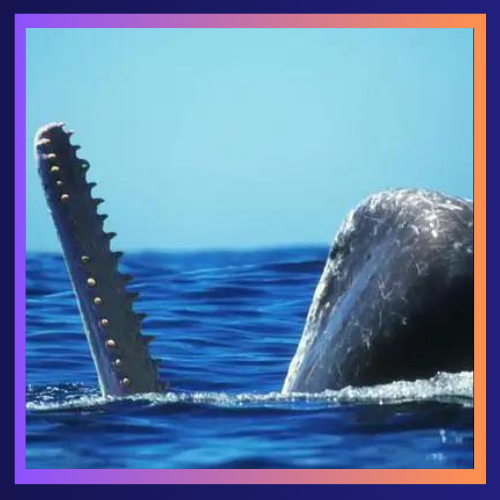
In closing
The sperm whale is truly remarkable in the ocean realm due to its size and exceptional diving skills as well as its intricate social interactions that have intrigued humans for ages. Ensuring the well being of these creatures is vital to preserving their existence in the deep sea for future generations.
References
1. Sperm Whales: Social Evolution in the Ocean. University of Chicago Press. https://press.uchicago.edu/ucp/books/book/chicago/S/bo3639407.html
2. https://explorer.natureserve.org/Taxon/ELEMENT_GLOBAL.2.101043/Physeter_macrocephalus


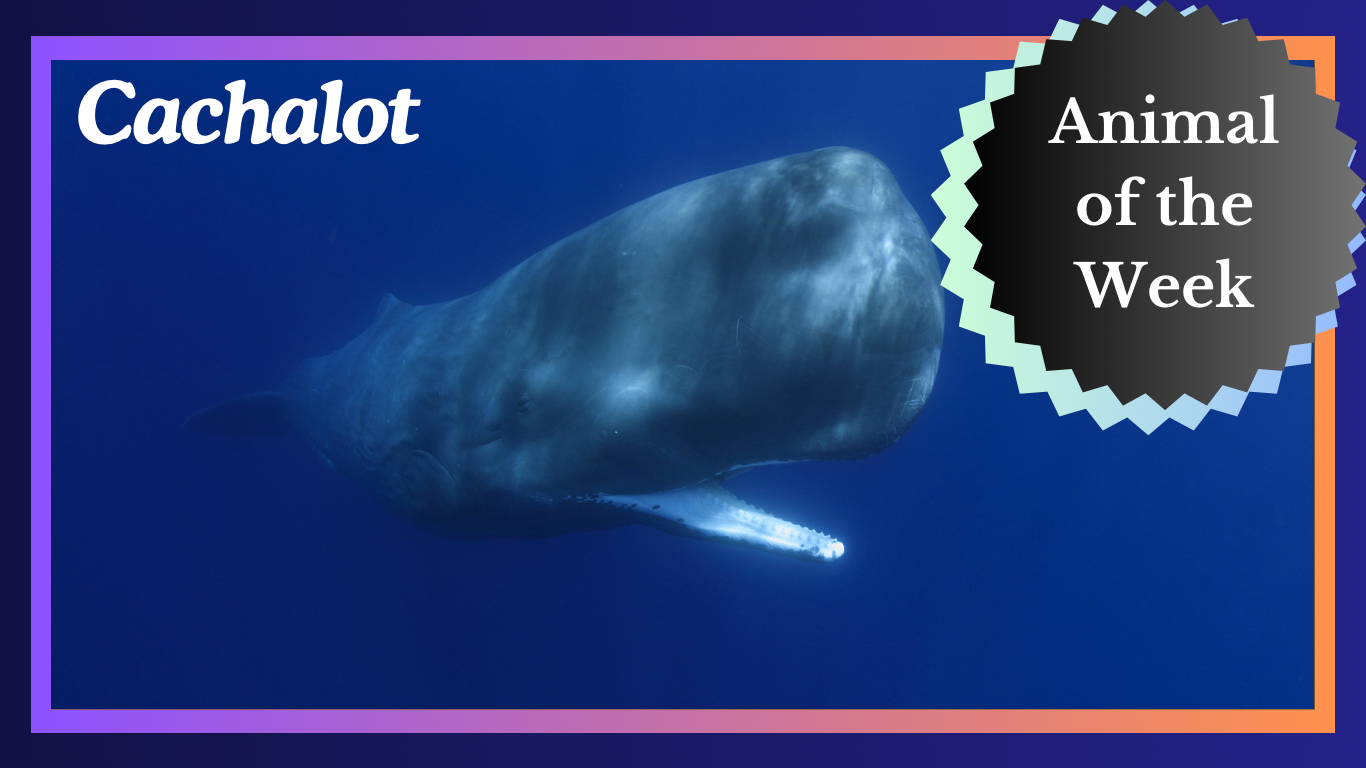


Thanks for sharing. I read many of your blog posts, cool, your blog is very good.
Thanks for sharing. I read many of your blog posts, cool, your blog is very good.
Thanks for sharing. I read many of your blog posts, cool, your blog is very good.